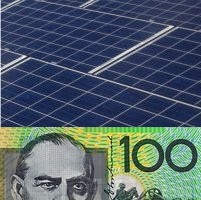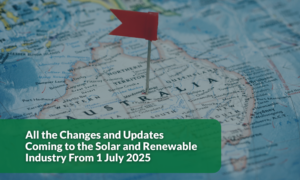Last year, the Victorian government made good on an election commitment to commence a process it said would help ensure the state’s solar households and businesses receive fair payment for the solar electricity they export to the mains grid.
The Essential Services Commission (ESC) was tasked with the investigation, and while the exercise has run well over the originally proposed timelines, RenewEconomy reports the final report (PDF) was tabled yesterday.
The report recognises that Victorians should be getting a better deal from solar feed in tariffs.
Among its findings:
- The ESC suggests the current single tariff could be replaced by a framework allowing for a feed-in tariff that varies according to time and location – and more closely reflects the underlying wholesale price of electricity.
- It says a multi-rate FiT that aligns with time blocks already operating for flexible retail prices ( peak, shoulder and off-peak) would be preferable.
- The region in which the system is installed should come into play as higher line losses apply in the north and west of the state.
- There should be a payment mechanism for environmental and social value – something not incorporated in the current feed in tariff.
- A revised regulated tariff structure could continue to impose a minimum obligation on retailers.
The current minimum feed in tariff in Victoria is set at 5c per kilowatt hour. While it’s certainly better than a poke in the eye with a sharp stick and some retailers offer higher rates, it really doesn’t reflect the value of the electricity; the majority of which is generated during peak price periods and is consumed close to the point of production, avoiding line losses.
Lower feed in tariffs have been a contributing factor in a greater focus on self-consumption of solar electricity and home battery systems.
The ESC has suggested changes be phased in over time. It envisions a multi-rate FiT, including different rates for peak, off-peak, shoulder and critical peak periods, be implemented on July 1, 2017. Then in July 2018, a payment component reflecting avoided greenhouse gas emissions could be introduced; followed by location-based pricing in the form of two loss-zones in July 2019.
In other feed-in tariff news relevant to Victoria, the clock is ticking for participants in the state’s legacy Transitional Feed-in Tariff (TFiT) scheme.
The scheme, which closed to new customers on 31 December 2012 and ends on December 31 this year, pays participants a minimum credit of 25 cents per kilowatt hour for surplus electricity fed back into the grid.
After December 31, these participants will be receiving as little as 5c per kilowatt hour – although that may be increased next year given the ESC’s findings. However, whatever increase may be applied in the foreseeable future is unlikely to match the 25c/kWh rate on average.
The final closure of the scheme will have a significant impact. Energy Matters has published an end of TFiT guide for participants; outlining their potential options – including battery storage to help squeeze maximum benefit from their solar power systems.












































